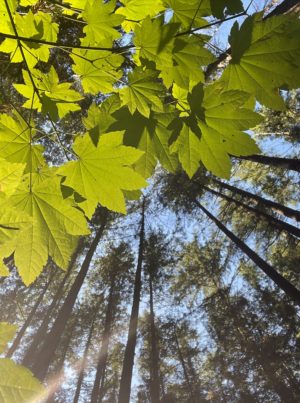 Dr. Richard Karban, a trained ecologist and member of the UC Davis Entomology Department… who covers an array of intriguing topics, from “eavesdropping” plants to distinct plant “personalities”, is fully aware of the controversy surrounding his field. But he emphasizes that plant communication isn’t a fantasy; it is a biological response to specific cues. …Decades ago, little was known about it. Today, many researchers, such as Dr. Karban, argue that forests are highly communicative biological networks. These are sophisticated behaviors, but Karban attributes them to evolution and natural selection, not hidden sentience. He cautions against projecting human emotions onto biology, but suggests that to understand plants, we must understand their version of a “Hierarchy of Needs.” …Dr Kathryn Flinn, an ecologist at Baldwin Wallace University, believes that while mycorrhizal networks move resources, this does not mean the tree sending those resources is making a strategic or selfless decision. …Another notion gaining attention is that of a ‘Mother Tree’ recognising family members.
Dr. Richard Karban, a trained ecologist and member of the UC Davis Entomology Department… who covers an array of intriguing topics, from “eavesdropping” plants to distinct plant “personalities”, is fully aware of the controversy surrounding his field. But he emphasizes that plant communication isn’t a fantasy; it is a biological response to specific cues. …Decades ago, little was known about it. Today, many researchers, such as Dr. Karban, argue that forests are highly communicative biological networks. These are sophisticated behaviors, but Karban attributes them to evolution and natural selection, not hidden sentience. He cautions against projecting human emotions onto biology, but suggests that to understand plants, we must understand their version of a “Hierarchy of Needs.” …Dr Kathryn Flinn, an ecologist at Baldwin Wallace University, believes that while mycorrhizal networks move resources, this does not mean the tree sending those resources is making a strategic or selfless decision. …Another notion gaining attention is that of a ‘Mother Tree’ recognising family members.

 Gold River, BC — This has not been a good year for forestry as the industry continues to feel the pain from escalating tariffs, mill closures and job losses. But in Nootka Sound a First Nation is looking to a future where trees have a higher value staying in the ground. …the Mowachaht/Muchalaht First Nation is looking at an entirely different economic approach to managing its territorial forests and waters in Nootka Sound. The First Nation’s Salmon Parks project aims to have 66,595 hectares, comprising approximately 20 per cent of its land territory, under a protected designation by 2030. The initiative strictly limits industrial activity within the Salmon Parks – particularly old growth logging – with hopes of eventually allowing nature to heal itself to the point that salmon runs rebound from the headwaters to the ocean. …As the project seeks an economic future, the Salmon Parks initiative is looking at the economic value of keeping trees standing by selling carbon credits.
Gold River, BC — This has not been a good year for forestry as the industry continues to feel the pain from escalating tariffs, mill closures and job losses. But in Nootka Sound a First Nation is looking to a future where trees have a higher value staying in the ground. …the Mowachaht/Muchalaht First Nation is looking at an entirely different economic approach to managing its territorial forests and waters in Nootka Sound. The First Nation’s Salmon Parks project aims to have 66,595 hectares, comprising approximately 20 per cent of its land territory, under a protected designation by 2030. The initiative strictly limits industrial activity within the Salmon Parks – particularly old growth logging – with hopes of eventually allowing nature to heal itself to the point that salmon runs rebound from the headwaters to the ocean. …As the project seeks an economic future, the Salmon Parks initiative is looking at the economic value of keeping trees standing by selling carbon credits.  Band-aid solutions are not going to fix the flooding problems in the Chemainus River watershed, Chief James Thomas from the Halalt First Nation told North Cowichan’s council on Nov. 19. He said the watershed and its salmon are in jeopardy mainly due to logging practices that were conducted upstream in the watershed over the past 50 years. Thomas said the Halalt and its partners, who are working on finding solutions to the watershed’s issues, didn’t create the problem, they inherited it. There is general community consensus that gravel and sediment accumulation, scoured banks, and increased debris, largely from logging operations upstream, have increased in recent years causing extreme flooding downstream, including on Halalt reserve lands. …Thomas and Cheri Ayers from Waters Edge Biological Consultants made a presentation to council on the Chemainus Watershed Initiative. The initiative began following two flooding events in 2020 and 2021.
Band-aid solutions are not going to fix the flooding problems in the Chemainus River watershed, Chief James Thomas from the Halalt First Nation told North Cowichan’s council on Nov. 19. He said the watershed and its salmon are in jeopardy mainly due to logging practices that were conducted upstream in the watershed over the past 50 years. Thomas said the Halalt and its partners, who are working on finding solutions to the watershed’s issues, didn’t create the problem, they inherited it. There is general community consensus that gravel and sediment accumulation, scoured banks, and increased debris, largely from logging operations upstream, have increased in recent years causing extreme flooding downstream, including on Halalt reserve lands. …Thomas and Cheri Ayers from Waters Edge Biological Consultants made a presentation to council on the Chemainus Watershed Initiative. The initiative began following two flooding events in 2020 and 2021.

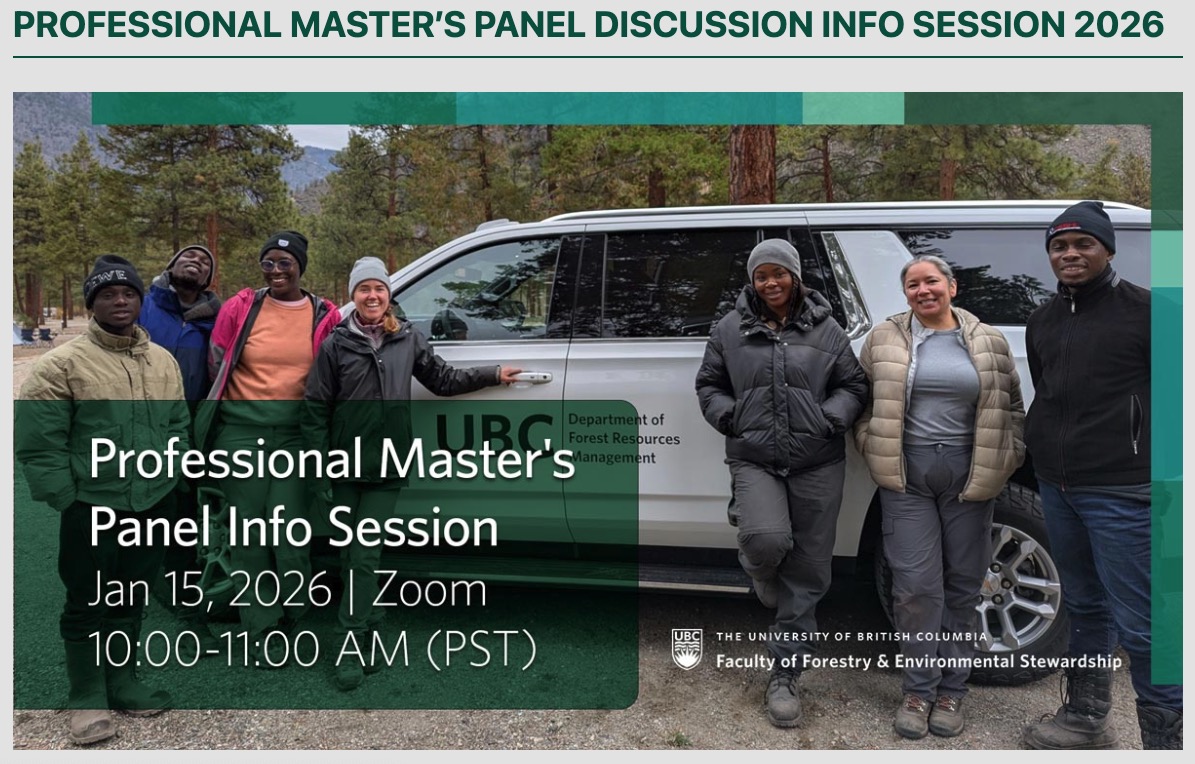 The University of British Columbia Faculty of Forestry & Environmental Stewardship will host an online Professional Master’s Panel Discussion and Information Session on January 15, 2026 (10:00–11:00 am PST) via Zoom. The session is designed for prospective graduate students and professionals seeking to deepen technical expertise, strengthen leadership capabilities, and expand industry networks within forestry and environmental management fields. Representatives from four accelerated professional master’s programs will present and answer questions: the Master of Geomatics for Environmental Management, emphasizing geospatial technologies for natural resource planning; the Master of International Forestry, combining experiential learning with applied coursework; the Master of Sustainable Forest Management, focusing on professional land management; and the Master of Urban Forestry Leadership, an interdisciplinary program targeting urban forestry strategy and climate adaptation. Participants will engage directly with program directors, coordinators, and advising staff to assess fit and clarify admissions, curriculum, and career outcomes.
The University of British Columbia Faculty of Forestry & Environmental Stewardship will host an online Professional Master’s Panel Discussion and Information Session on January 15, 2026 (10:00–11:00 am PST) via Zoom. The session is designed for prospective graduate students and professionals seeking to deepen technical expertise, strengthen leadership capabilities, and expand industry networks within forestry and environmental management fields. Representatives from four accelerated professional master’s programs will present and answer questions: the Master of Geomatics for Environmental Management, emphasizing geospatial technologies for natural resource planning; the Master of International Forestry, combining experiential learning with applied coursework; the Master of Sustainable Forest Management, focusing on professional land management; and the Master of Urban Forestry Leadership, an interdisciplinary program targeting urban forestry strategy and climate adaptation. Participants will engage directly with program directors, coordinators, and advising staff to assess fit and clarify admissions, curriculum, and career outcomes.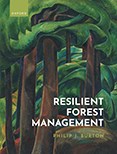
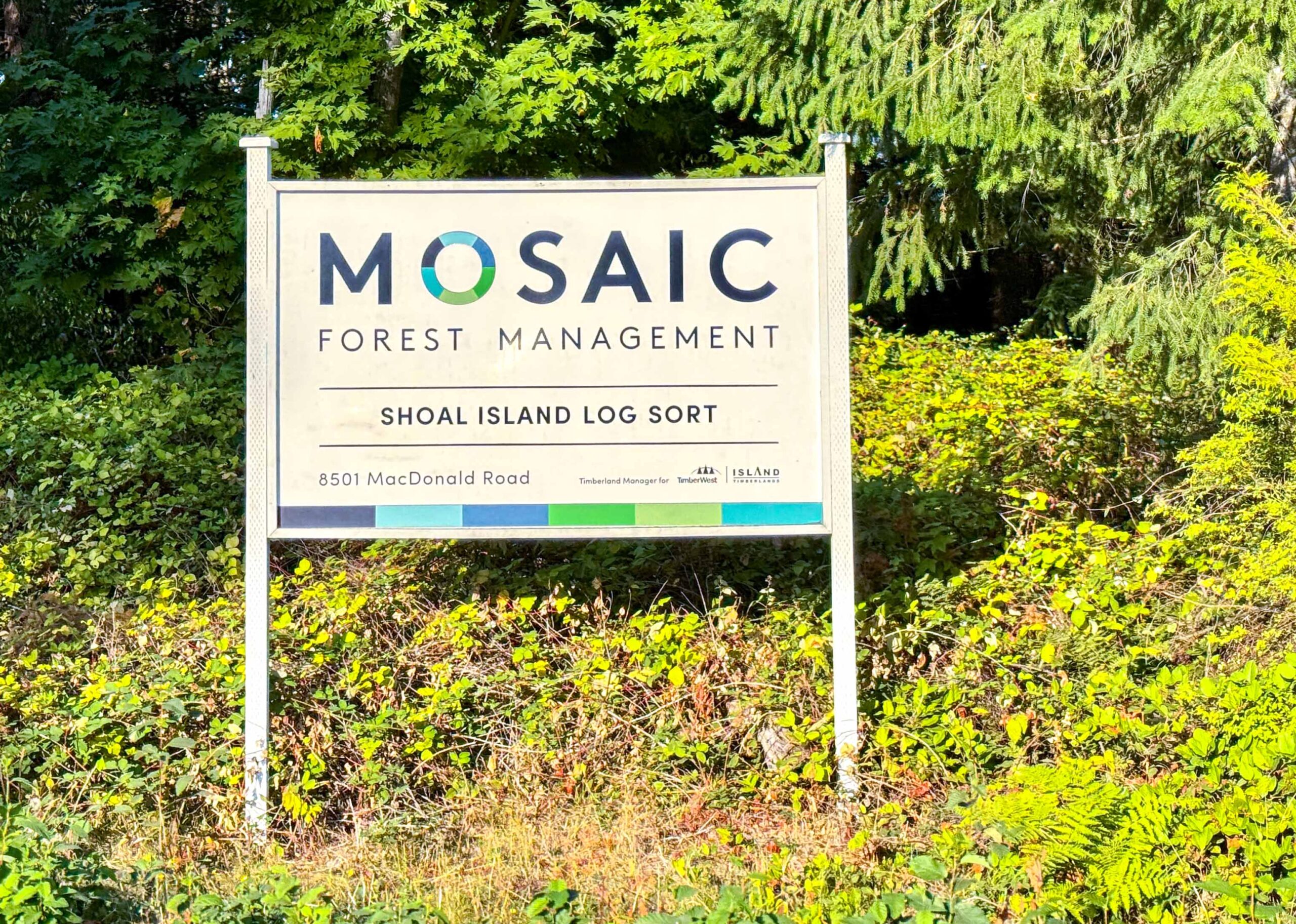 Mosaic Forest Management is moving forward with plans to modernize its access program, following a survey earlier this year. In May, 7,600 respondents “clearly indicated Islanders want well-managed public recreation access,” Mosaic said. To that end, Mosaic hired RC Strategies and Legacy Tourism Group. The two firms will build a stronger system for managing recreation on Mosaic lands, balancing public access with environmental protection, safety, and operational needs. Pilot initiatives are expected to be implemented in 2026. …The upcoming engagement process will include First Nations, users, and community members, [as well as] local and provincial governments to address challenges that private forest landowners cannot resolve independently. …“Mosaic is taking a progressive step that very few private landowners have undertaken at this scale,” said Justin Ellis, Partner at RC Strategies. “We’re excited to help develop a recreation access program that balances great outdoor experiences with the operational and environmental realities of a privately owned working forest.”
Mosaic Forest Management is moving forward with plans to modernize its access program, following a survey earlier this year. In May, 7,600 respondents “clearly indicated Islanders want well-managed public recreation access,” Mosaic said. To that end, Mosaic hired RC Strategies and Legacy Tourism Group. The two firms will build a stronger system for managing recreation on Mosaic lands, balancing public access with environmental protection, safety, and operational needs. Pilot initiatives are expected to be implemented in 2026. …The upcoming engagement process will include First Nations, users, and community members, [as well as] local and provincial governments to address challenges that private forest landowners cannot resolve independently. …“Mosaic is taking a progressive step that very few private landowners have undertaken at this scale,” said Justin Ellis, Partner at RC Strategies. “We’re excited to help develop a recreation access program that balances great outdoor experiences with the operational and environmental realities of a privately owned working forest.”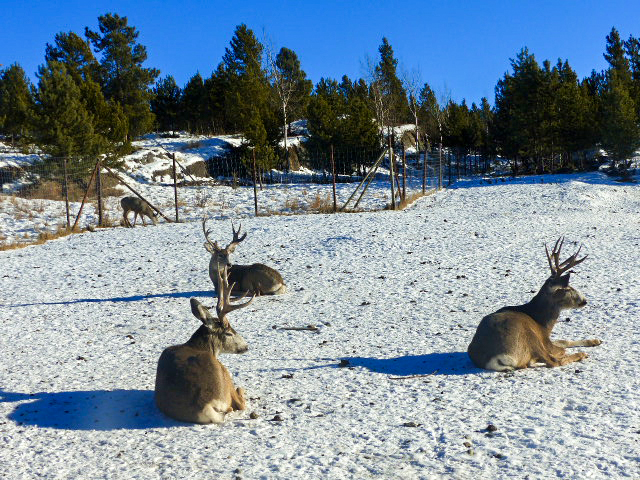 Further testing has confirmed that a sample submitted from a male white-tailed deer harvested east of Enderby is negative for chronic wasting disease (CWD). CWD is an infectious and fatal disease affecting cervids, including deer, elk, moose and caribou. The initial screening test by the B.C. Animal Health Centre showed a “non-negative” finding for the sample, meaning the disease could not be definitively ruled out and required more testing. Following standard protocol, the sample was sent to the Canadian Food Inspection Agency reference laboratory for confirmatory testing. The laboratory conducted confirmatory testing using three different methods. All results were negative for CWD.
Further testing has confirmed that a sample submitted from a male white-tailed deer harvested east of Enderby is negative for chronic wasting disease (CWD). CWD is an infectious and fatal disease affecting cervids, including deer, elk, moose and caribou. The initial screening test by the B.C. Animal Health Centre showed a “non-negative” finding for the sample, meaning the disease could not be definitively ruled out and required more testing. Following standard protocol, the sample was sent to the Canadian Food Inspection Agency reference laboratory for confirmatory testing. The laboratory conducted confirmatory testing using three different methods. All results were negative for CWD.
 I have great sympathy for mill workers in Crofton and Chemainus and the other 43 mills in towns throughout B.C. that have closed because there is “insufficient viable fibre supply.” This statement is smoke to hide the fact that the companies, with the complicity of the province, have over-harvested the forest since at least the 1970s. Second-growth trees are not as voluminous as virgin timber. Second-growth is harvested in a last gasp to get as much profit from the woods before shuttering mills due to “insufficient viable fibre supply”. The forest sector has made high profits and paid tariffs and softwood lumber duties since the 1980s, and now that the merchantable timber is gone, the blame is being transferred. …This situation even has a name — “The Fall Down Effect” — and has been predicted since the 1970s. …Timber processing will have to adapt to less volume and evolve toward greater value added.
I have great sympathy for mill workers in Crofton and Chemainus and the other 43 mills in towns throughout B.C. that have closed because there is “insufficient viable fibre supply.” This statement is smoke to hide the fact that the companies, with the complicity of the province, have over-harvested the forest since at least the 1970s. Second-growth trees are not as voluminous as virgin timber. Second-growth is harvested in a last gasp to get as much profit from the woods before shuttering mills due to “insufficient viable fibre supply”. The forest sector has made high profits and paid tariffs and softwood lumber duties since the 1980s, and now that the merchantable timber is gone, the blame is being transferred. …This situation even has a name — “The Fall Down Effect” — and has been predicted since the 1970s. …Timber processing will have to adapt to less volume and evolve toward greater value added. These letters are all in today’s Victoria Times Colonist “Letters” section:
These letters are all in today’s Victoria Times Colonist “Letters” section: Four people were arrested, one for the second time, at an old growth logging protest encampment in Upper Walbran, according to RCMP. On Sept. 12, a judge granted an injunction to Tsawak-qin Forestry, which is co-owned by Western Forest Products and the Huu-ay-aht First Nations. RCMP have been enforcing the injunction, going into the forest for the third time. On Dec. 8, RCMP says four men were arrested for allegedly breaching the injunction. One is being held for breaching release conditions from his arrest on Nov. 25. One person was arrested for criminal obstruction of police for allegedly resisting arrest. RCMP says when officers arrived on Dec. 8, they found “physical structures” had been set up on the only bridge leading to a work site where the employees needed access. …Solène Tessier said “Why would the Eby keep clearcutting ancient forests instead of protecting the communities that rely on this dying industry?”
Four people were arrested, one for the second time, at an old growth logging protest encampment in Upper Walbran, according to RCMP. On Sept. 12, a judge granted an injunction to Tsawak-qin Forestry, which is co-owned by Western Forest Products and the Huu-ay-aht First Nations. RCMP have been enforcing the injunction, going into the forest for the third time. On Dec. 8, RCMP says four men were arrested for allegedly breaching the injunction. One is being held for breaching release conditions from his arrest on Nov. 25. One person was arrested for criminal obstruction of police for allegedly resisting arrest. RCMP says when officers arrived on Dec. 8, they found “physical structures” had been set up on the only bridge leading to a work site where the employees needed access. …Solène Tessier said “Why would the Eby keep clearcutting ancient forests instead of protecting the communities that rely on this dying industry?”
 PRINCE GEORGE – Conservation North is calling out Premier David Eby for what they see as inconsistencies in his stance on old-growth logging. They highlight his opposition to logging old-growth forests to keep a Vancouver Island pulp mill running, while remaining quiet about the ongoing old-growth logging happening in the northern regions. …Conservation North argues that in central BC, nearly all the wood supplied to pulp and pellet mills still comes from primary forests, including old-growth areas. …The provincial government said “The interior of B.C. is home to a vast network of lumber sawmills, specialty wood manufacturing facilities, and pulp, paper, and pellet plants. This interconnected sector uses every part of the tree. …The pulp and paper sector is integral to this supply chain, buying lumber sawmill residuals, like sawdust, shavings, and chips, and harvest residuals like branches and bark. …The pulp and paper sector has also been leading the way in using wildfire salvaged wood.
PRINCE GEORGE – Conservation North is calling out Premier David Eby for what they see as inconsistencies in his stance on old-growth logging. They highlight his opposition to logging old-growth forests to keep a Vancouver Island pulp mill running, while remaining quiet about the ongoing old-growth logging happening in the northern regions. …Conservation North argues that in central BC, nearly all the wood supplied to pulp and pellet mills still comes from primary forests, including old-growth areas. …The provincial government said “The interior of B.C. is home to a vast network of lumber sawmills, specialty wood manufacturing facilities, and pulp, paper, and pellet plants. This interconnected sector uses every part of the tree. …The pulp and paper sector is integral to this supply chain, buying lumber sawmill residuals, like sawdust, shavings, and chips, and harvest residuals like branches and bark. …The pulp and paper sector has also been leading the way in using wildfire salvaged wood.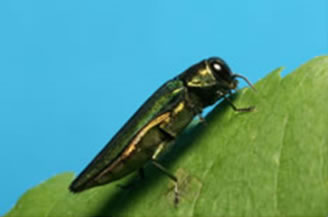

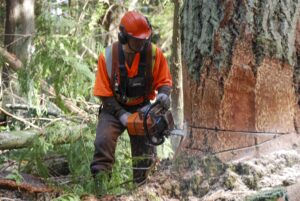 President Trump swept into office with a promise to ramp up the timber business on national forests. So far, they’re just treading water. The Forest Service reported relatively flat timber harvests and sales for the fiscal year that ended Sept. 30. …According to the agency’s cut-and-sold reports, national forests cut 2.52 billion board feet of timber for the fiscal year, down slightly from the 2.66 billion board feet cut during the last full fiscal year of the Biden administration. Sales volume totalled 2.95 billion board feet, a slight increase from the prior year but a drop from 3.08 billion board feet the year before that. The suppressed returns reflect some of the challenges in meeting Trumps’s directive to use national forests to reduce the nation’s reliance on wood imports. Those include wildfires, market conditions… and the Forest Service’s ability to set up and run timber sales after the administration whittled the workforce. [to access the full story, an E&E News subscription is required]
President Trump swept into office with a promise to ramp up the timber business on national forests. So far, they’re just treading water. The Forest Service reported relatively flat timber harvests and sales for the fiscal year that ended Sept. 30. …According to the agency’s cut-and-sold reports, national forests cut 2.52 billion board feet of timber for the fiscal year, down slightly from the 2.66 billion board feet cut during the last full fiscal year of the Biden administration. Sales volume totalled 2.95 billion board feet, a slight increase from the prior year but a drop from 3.08 billion board feet the year before that. The suppressed returns reflect some of the challenges in meeting Trumps’s directive to use national forests to reduce the nation’s reliance on wood imports. Those include wildfires, market conditions… and the Forest Service’s ability to set up and run timber sales after the administration whittled the workforce. [to access the full story, an E&E News subscription is required]
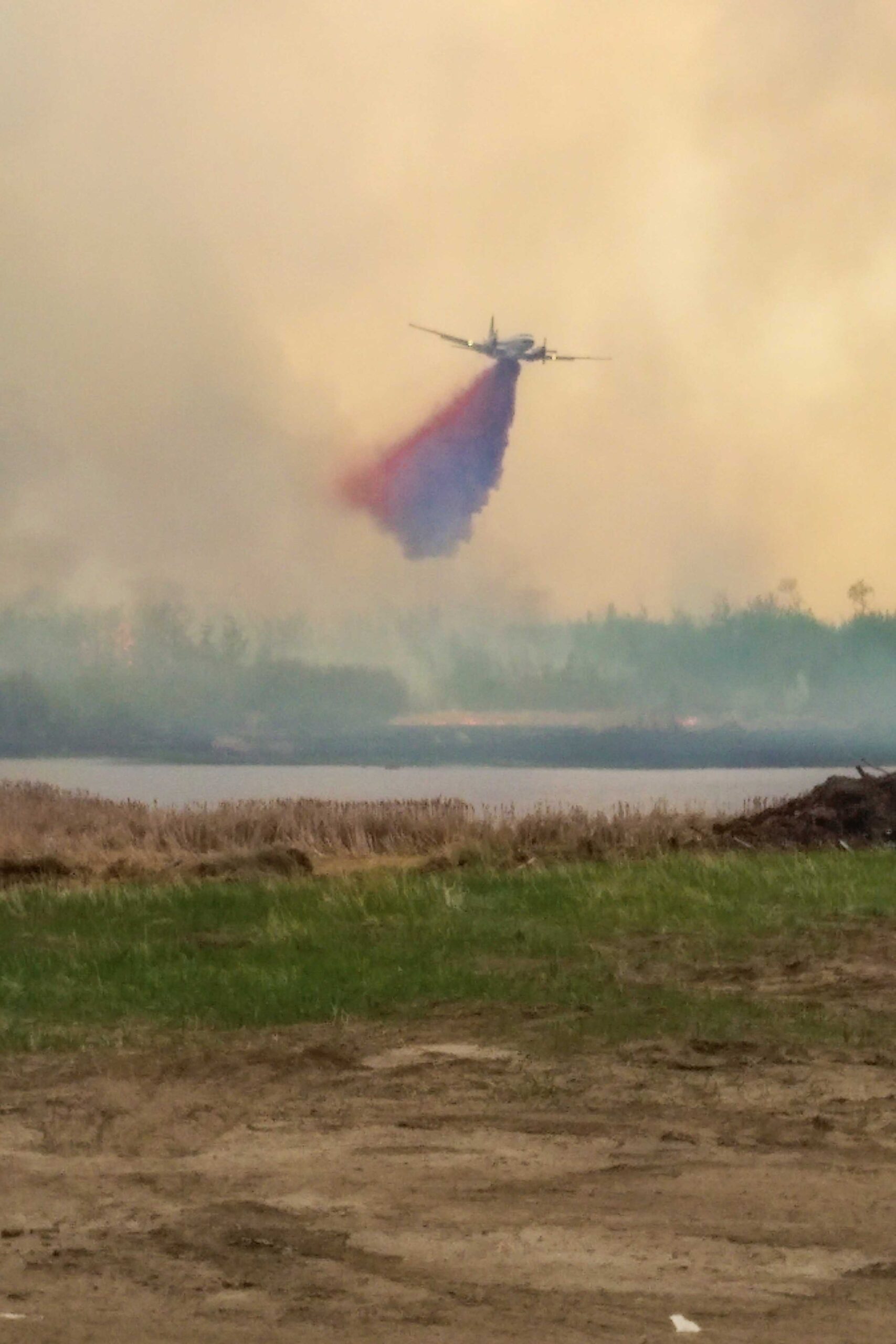 WASHINGTON, D.C. —
WASHINGTON, D.C. — 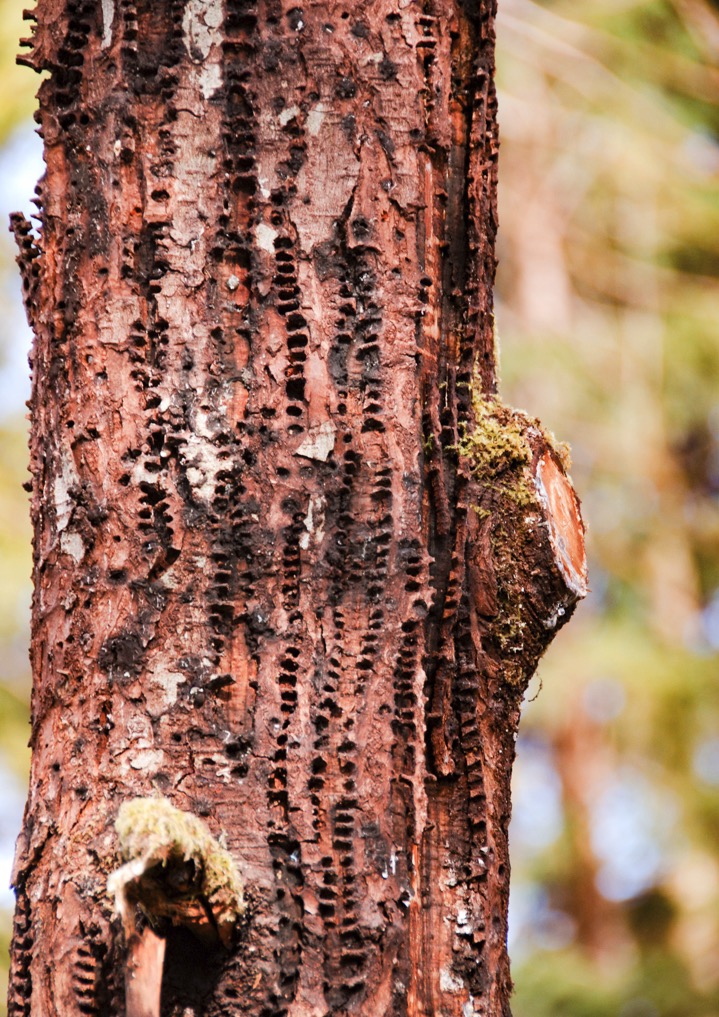 The Trump administration’s pending deletion of the Endangered Species Act’s definition of “harm” will have an outsize impact on imperiled species in Northwest forests targeted for logging, especially the northern spotted owl, environmental attorneys say. Habitat for several species, including the threatened owl and the endangered marbled murrelet seabird, overlap with federally-managed forests in Oregon, Washington, and California, where logging is expected to increase under White House emergency orders and a new law that requires a roughly 75% increase in timber harvesting in national forests by 2034. “Without adequate, suitable places to live and reproduce, species go extinct,” said Melinda Taylor, senior lecturer at the University of Texas at Austin School of Law. “Repealing the definition of harm would undermine almost all of the regulatory framework in place to protect endangered species.”
The Trump administration’s pending deletion of the Endangered Species Act’s definition of “harm” will have an outsize impact on imperiled species in Northwest forests targeted for logging, especially the northern spotted owl, environmental attorneys say. Habitat for several species, including the threatened owl and the endangered marbled murrelet seabird, overlap with federally-managed forests in Oregon, Washington, and California, where logging is expected to increase under White House emergency orders and a new law that requires a roughly 75% increase in timber harvesting in national forests by 2034. “Without adequate, suitable places to live and reproduce, species go extinct,” said Melinda Taylor, senior lecturer at the University of Texas at Austin School of Law. “Repealing the definition of harm would undermine almost all of the regulatory framework in place to protect endangered species.” 
 Climate change is contributing to drier conditions in the Pacific Northwest, causing wildfires to become more intense and destructive. A growing reforestation industry has emerged in their wake. The company Silvaseed is a key player in the region. Based southeast of Olympia in Roy, Washington, Silvaseed collects, cleans, catalogues and preserves seeds. It also raises millions of seedlings every year in its greenhouses and fields. Customers include private timber companies, public land managers and tribal nations. …Inside a warehouse built in the 1940s, Silvaseed general manager Kea Woodruff starts a tour of the facilities by flipping a switch to fire up a huge, old kiln. …Woodruff said most species’ cones need the kiln to reach about 100 degrees Fahrenheit. …At every step of the way, as the seed gets refined and purified, the bags are meticulously labeled and tracked.
Climate change is contributing to drier conditions in the Pacific Northwest, causing wildfires to become more intense and destructive. A growing reforestation industry has emerged in their wake. The company Silvaseed is a key player in the region. Based southeast of Olympia in Roy, Washington, Silvaseed collects, cleans, catalogues and preserves seeds. It also raises millions of seedlings every year in its greenhouses and fields. Customers include private timber companies, public land managers and tribal nations. …Inside a warehouse built in the 1940s, Silvaseed general manager Kea Woodruff starts a tour of the facilities by flipping a switch to fire up a huge, old kiln. …Woodruff said most species’ cones need the kiln to reach about 100 degrees Fahrenheit. …At every step of the way, as the seed gets refined and purified, the bags are meticulously labeled and tracked.
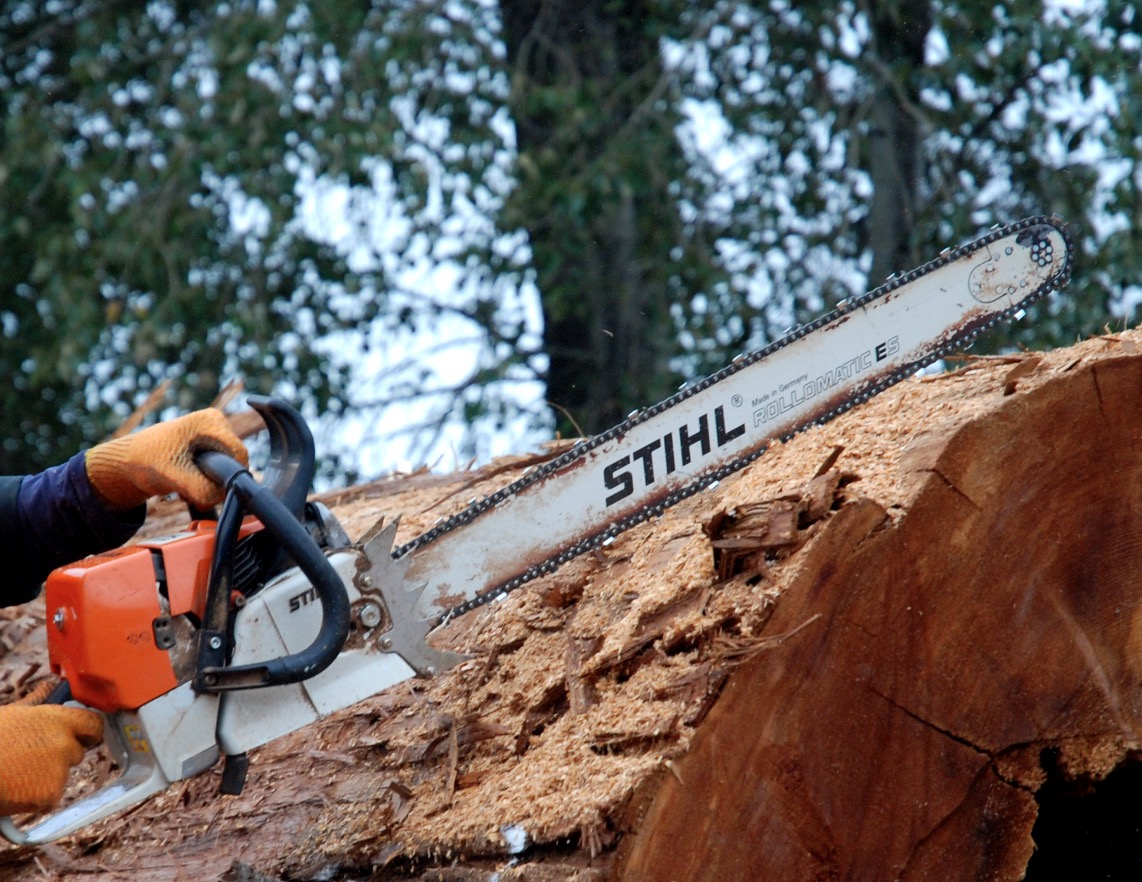 Two meetings next week between U.S. Forest Service leadership and timber industry representatives in Southeast Alaska are raising concerns among tribal and other officials about the possibility a years-long revision of the management plan for the Tongass National Forest will be halted by the Trump administration. At least one additional meeting is now planned next week because of those concerns, scheduled next Friday in Juneau between Forest Service leaders and members of the Central Council of the Tlingit and Haida Indian Tribes of Alaska, according to officials. A request to halt work on the revised plan is being made by the Alaska Forest Association, which states less than 10% of old-growth trees allotted to the timber industry in a 2016 revision of the plan have actually been authorized for harvest. The allocation of 430 million board feet (mmbf) was intended to support a 15-year industry transition to harvesting new-growth trees, according to AFA.
Two meetings next week between U.S. Forest Service leadership and timber industry representatives in Southeast Alaska are raising concerns among tribal and other officials about the possibility a years-long revision of the management plan for the Tongass National Forest will be halted by the Trump administration. At least one additional meeting is now planned next week because of those concerns, scheduled next Friday in Juneau between Forest Service leaders and members of the Central Council of the Tlingit and Haida Indian Tribes of Alaska, according to officials. A request to halt work on the revised plan is being made by the Alaska Forest Association, which states less than 10% of old-growth trees allotted to the timber industry in a 2016 revision of the plan have actually been authorized for harvest. The allocation of 430 million board feet (mmbf) was intended to support a 15-year industry transition to harvesting new-growth trees, according to AFA.


 A federal judge on Thursday vacated the U.S. Forest Service’s approval of a massive logging project [to harvest] about 16,500 acres of pine trees in the Custer Gallatin National Forest in southern Montana, just north of Yellowstone National Park. Senior U.S. District Judge Donald Molloy in Missoula, Montana, agreed with a collective of environmental advocates that the U.S. Forest Service failed to meet the requirements of the National Environmental Policy Act by relying on a condition-based management approach, which doesn’t identify the location of the 56.8 miles of temporary roads for the project and, as such, doesn’t adequately consider their impact on “secure habitat” for grizzly bears. Condition-based management defers specific decisions on how to proceed until the Forest Service has conducted field reviews. Here, it means the Forest Service has preliminarily identified areas as suitable for logging without identifying the precise location and size of the area to be cleared…
A federal judge on Thursday vacated the U.S. Forest Service’s approval of a massive logging project [to harvest] about 16,500 acres of pine trees in the Custer Gallatin National Forest in southern Montana, just north of Yellowstone National Park. Senior U.S. District Judge Donald Molloy in Missoula, Montana, agreed with a collective of environmental advocates that the U.S. Forest Service failed to meet the requirements of the National Environmental Policy Act by relying on a condition-based management approach, which doesn’t identify the location of the 56.8 miles of temporary roads for the project and, as such, doesn’t adequately consider their impact on “secure habitat” for grizzly bears. Condition-based management defers specific decisions on how to proceed until the Forest Service has conducted field reviews. Here, it means the Forest Service has preliminarily identified areas as suitable for logging without identifying the precise location and size of the area to be cleared… WASHINGTON — On Tuesday, the U.S. House of Representatives passed two major bills for Washington state Tribes, the Lower Elwha Klallam Tribe Project Lands Restoration Act, and the Quinault Indian Nation Land Transfer Act. Both bills initiate the first step to return land back to the Tribes by transferring ownership from the federal government to the Bureau of Indian Affairs to be held in trust for the benefit of the Tribes. [The bills were introduced into] legislation in April 2025. The bills now go to the Senate for consideration. “Today, we took an important step in upholding our treaty obligations by passing legislation to transfer land into trust for the Lower Elwha Klallam Tribe and the Quinault Indian Nation,” said Rep. Randall. “I urge my colleagues in the Senate to quickly pass these two bills to ensure we meet our trust responsibilities to restore Tribal lands.”
WASHINGTON — On Tuesday, the U.S. House of Representatives passed two major bills for Washington state Tribes, the Lower Elwha Klallam Tribe Project Lands Restoration Act, and the Quinault Indian Nation Land Transfer Act. Both bills initiate the first step to return land back to the Tribes by transferring ownership from the federal government to the Bureau of Indian Affairs to be held in trust for the benefit of the Tribes. [The bills were introduced into] legislation in April 2025. The bills now go to the Senate for consideration. “Today, we took an important step in upholding our treaty obligations by passing legislation to transfer land into trust for the Lower Elwha Klallam Tribe and the Quinault Indian Nation,” said Rep. Randall. “I urge my colleagues in the Senate to quickly pass these two bills to ensure we meet our trust responsibilities to restore Tribal lands.”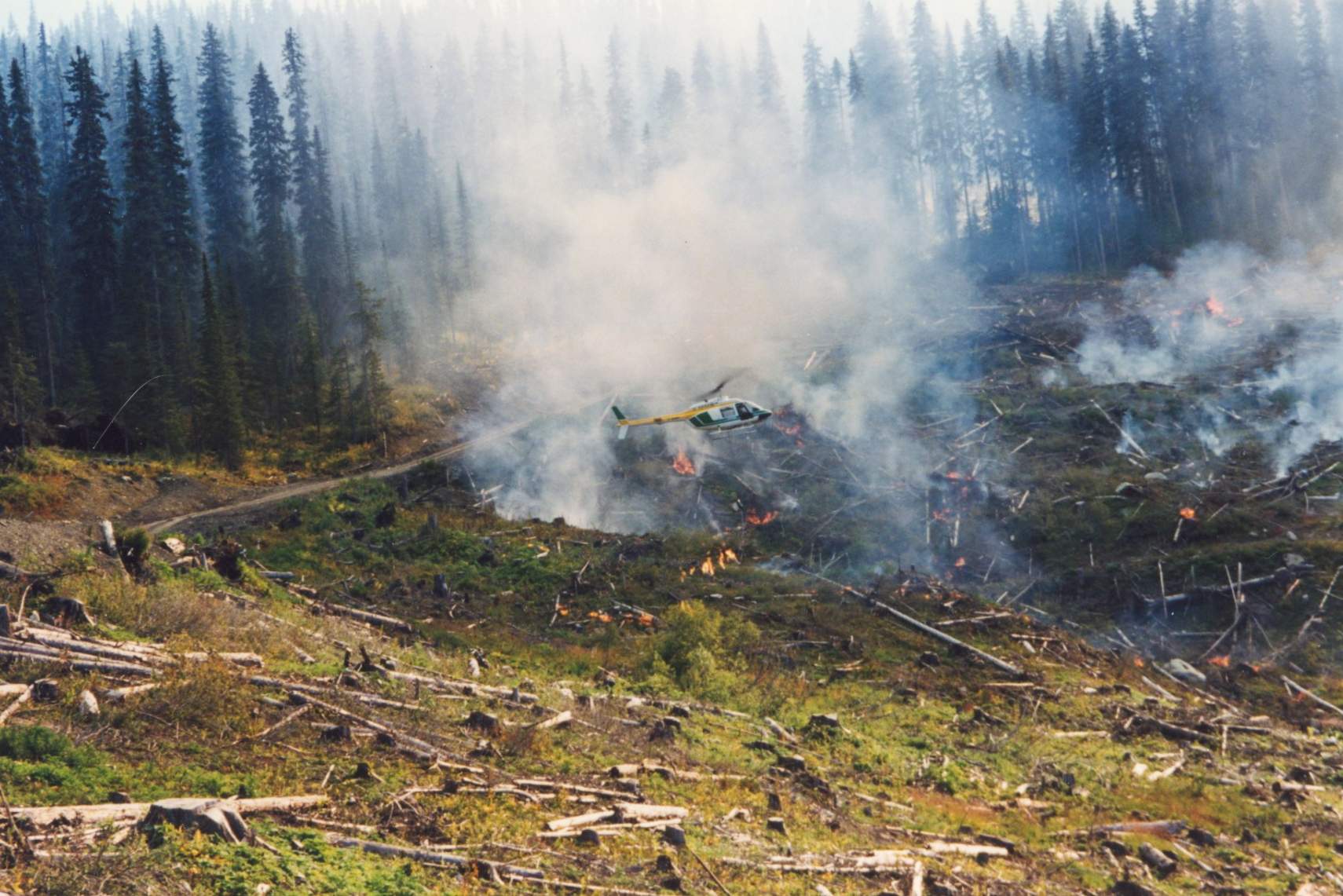 A new analysis making the rounds on Capitol Hill says the U.S. Forest Service sharply scaled back prescribed burns, thinning and other fuel-reduction work this year, leaving far fewer acres treated than in recent years. Through the first nine months of 2025, the agency logged under 1.7 million acres of treatments, well below the roughly four-year average that wildfire experts say is needed to protect communities and watersheds. The drop-off has Democratic senators and veteran firefighters pressing the agency for staffing numbers and a concrete plan to catch up before next fire season. As reported by Times of San Diego, the data cited by lawmakers comes from an analysis compiled by Grassroots Wildland Firefighters that compares the January-September 2025 total to a roughly 3.6 million-acre annual average from 2021-2024. Senators circulated that tally in a letter demanding detailed staffing and mitigation plans from the Forest Service.
A new analysis making the rounds on Capitol Hill says the U.S. Forest Service sharply scaled back prescribed burns, thinning and other fuel-reduction work this year, leaving far fewer acres treated than in recent years. Through the first nine months of 2025, the agency logged under 1.7 million acres of treatments, well below the roughly four-year average that wildfire experts say is needed to protect communities and watersheds. The drop-off has Democratic senators and veteran firefighters pressing the agency for staffing numbers and a concrete plan to catch up before next fire season. As reported by Times of San Diego, the data cited by lawmakers comes from an analysis compiled by Grassroots Wildland Firefighters that compares the January-September 2025 total to a roughly 3.6 million-acre annual average from 2021-2024. Senators circulated that tally in a letter demanding detailed staffing and mitigation plans from the Forest Service.
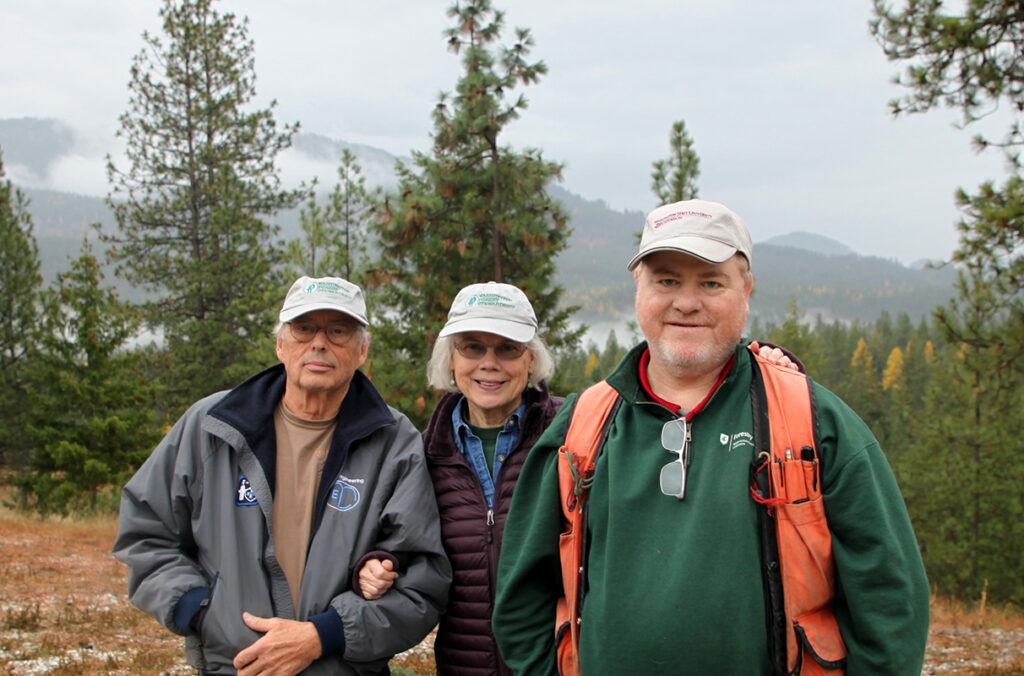
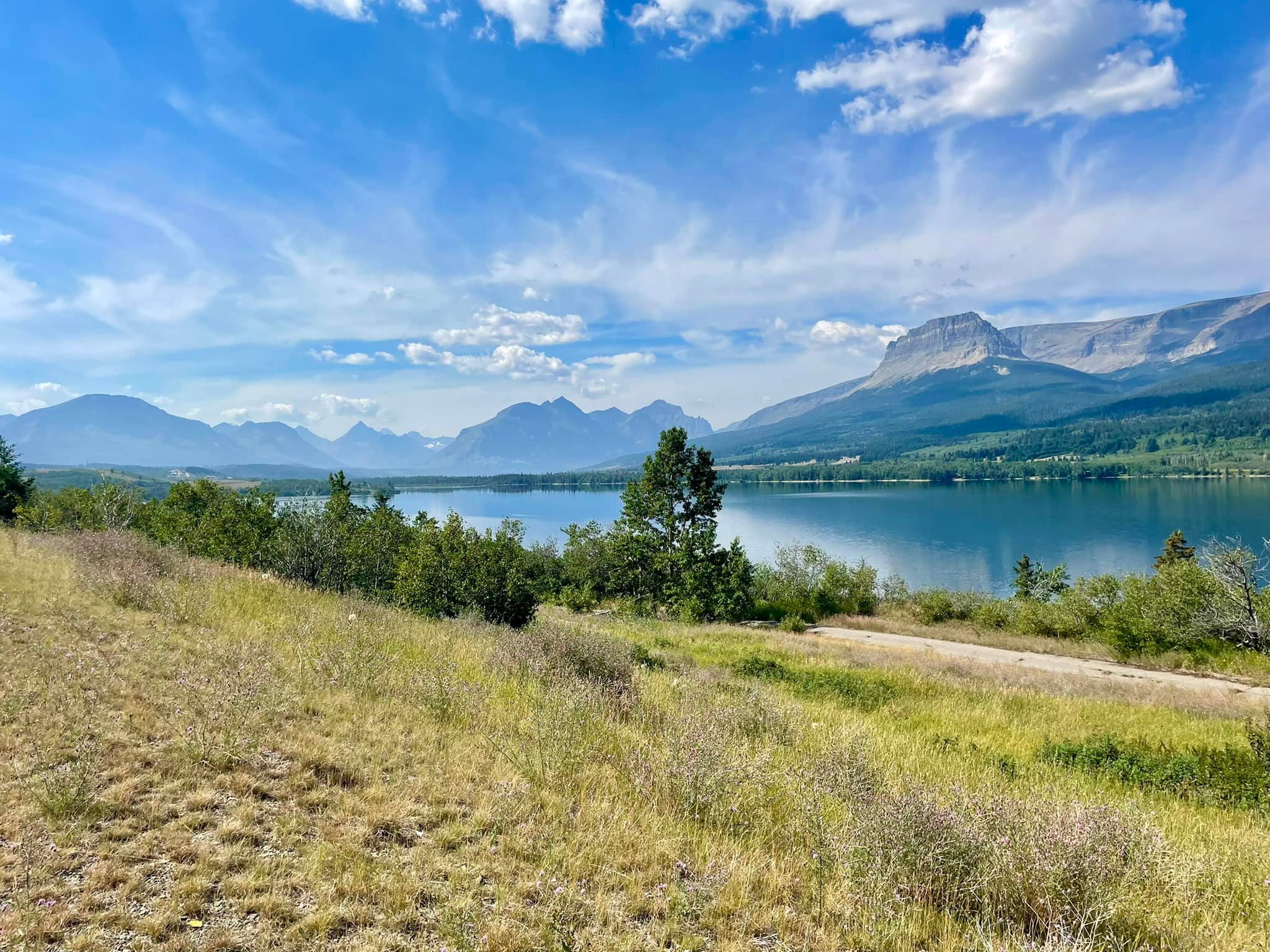 Despite a growing chorus of conservation advocates calling on Montana’s congressional delegates to defend roadless wildlands through permanent protections, a bill to do so seems unlikely to advance without Republican support, including that of U.S. Sen. Steve Daines. A Senate Energy and Natural Resources subcommittee on which Daines serves held a hearing Dec. 2 to consider a slate of 26 public lands and wildfire bills, among them a measure to enshrine the decades-old Roadless Rule into law. Re-introduced in June … the Roadless Area Conservation Act would protect nearly 60 million acres of national forestland. Although it has failed before, its supporters say this version comes at a pivotal moment as the Trump administration moves to roll back safeguards introduced in 2001. Hoping to capitalize on the bipartisan support that helped cleave a public land sale provision out of [the] One Big Beautiful Bill Act … conservation groups this week mounted a similar pressure campaign on Daines.
Despite a growing chorus of conservation advocates calling on Montana’s congressional delegates to defend roadless wildlands through permanent protections, a bill to do so seems unlikely to advance without Republican support, including that of U.S. Sen. Steve Daines. A Senate Energy and Natural Resources subcommittee on which Daines serves held a hearing Dec. 2 to consider a slate of 26 public lands and wildfire bills, among them a measure to enshrine the decades-old Roadless Rule into law. Re-introduced in June … the Roadless Area Conservation Act would protect nearly 60 million acres of national forestland. Although it has failed before, its supporters say this version comes at a pivotal moment as the Trump administration moves to roll back safeguards introduced in 2001. Hoping to capitalize on the bipartisan support that helped cleave a public land sale provision out of [the] One Big Beautiful Bill Act … conservation groups this week mounted a similar pressure campaign on Daines.
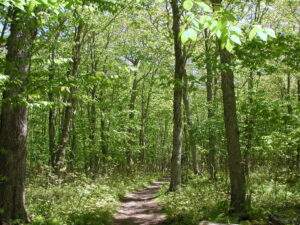 WARREN COUNTY, Pittsburgh — Local leaders and timber industry professionals are hoping for an economic boost as logging increases in the Allegheny National Forest. The timber industry has strong roots in the four counties that contain the Allegheny National Forest: Elk, Forest, McKean, and Warren. With fewer than 150,000 residents, it’s a small enough region where almost everyone knows everyone else in the business. …“If you’re somebody who lives here, almost everybody is touched in some way by the timber industry,” said Julia McCray, at the Allegheny Forest Alliance, a coalition dedicated to the national forest’s health that includes local officials and people from the timber industry. As logging expands on federal lands amid a Trump administration push for more timber, the effects could be felt for years to come — in the forest and beyond. A single logging operation relies on a multi-step chain of work that employs many.
WARREN COUNTY, Pittsburgh — Local leaders and timber industry professionals are hoping for an economic boost as logging increases in the Allegheny National Forest. The timber industry has strong roots in the four counties that contain the Allegheny National Forest: Elk, Forest, McKean, and Warren. With fewer than 150,000 residents, it’s a small enough region where almost everyone knows everyone else in the business. …“If you’re somebody who lives here, almost everybody is touched in some way by the timber industry,” said Julia McCray, at the Allegheny Forest Alliance, a coalition dedicated to the national forest’s health that includes local officials and people from the timber industry. As logging expands on federal lands amid a Trump administration push for more timber, the effects could be felt for years to come — in the forest and beyond. A single logging operation relies on a multi-step chain of work that employs many.

